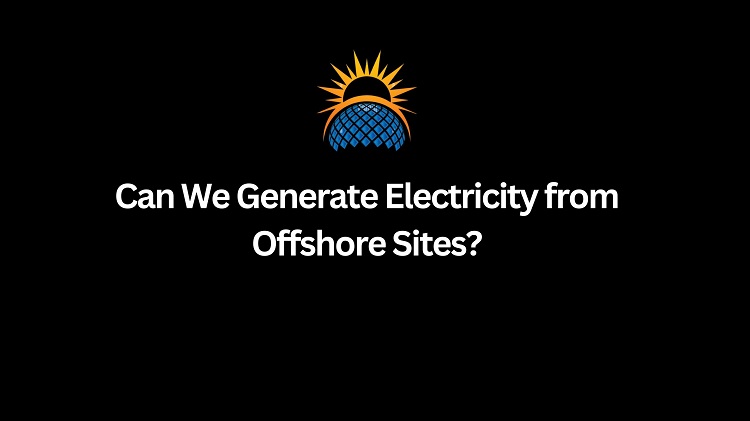blog.wisatalombok.co.id — Have you ever looked out at the ocean and wondered about the untapped potential of those vast waters? The concept of generating electricity from offshore sites isn’t just a dream anymore—it’s becoming a reality.
As we all know, renewable energy is the way forward, and offshore locations offer a goldmine of opportunities, especially when it comes to harnessing wind and wave energy.
So, what does generating electricity from offshore sites really look like? Well, picture this: towering wind turbines gracefully spinning in the sea breeze, buoyant devices bobbing on the waves, and underwater systems capturing the movement of the tides.
The future of energy generation is exciting, and it’s all happening just beyond the shore. Let’s dive into how this works and what it means for us!
Now, I know what you might be thinking. “Is it really feasible?
And how does it compare to other renewable energy sources?” Great questions! We’re about to explore the ins and outs of offshore energy generation, from the technology involved to its environmental benefits. So, grab a cup of coffee, get comfy, and let’s unravel this fascinating topic together!
Exploring Offshore Energy Generation
When we talk about generating electricity from offshore sites, two main players come into the spotlight: wind energy and ocean wave energy. Both are part of the broader renewable energy scene and are crucial for meeting our energy needs sustainably.
Offshore wind farms have gained a lot of traction in recent years, primarily due to their ability to harness stronger and more consistent winds found over the ocean. These wind energy systems can generate a substantial amount of electricity, contributing significantly to the power grid.
On the other hand, ocean wave energy is another exciting area we’re exploring. This method captures the energy produced by the movement of waves.
Picture it like harnessing the ocean’s rhythm! Devices designed for this purpose are strategically placed to convert wave motion into electrical energy, offering a reliable energy source that can complement other forms of renewable energy.
It’s like having your cake and eating it too—more energy options mean more sustainability!
Now, you might be wondering about the technical side of things. How do we actually generate renewable power from these offshore systems?
The process typically involves installing floating platforms equipped with turbines or buoys. These technologies are designed to withstand harsh marine conditions while efficiently converting kinetic energy from wind and waves into usable electricity.
With advancements in solar PV technology and marine engineering, we’re seeing innovative solutions that make offshore energy more viable than ever.
The Benefits of Offshore Electricity Generation
There are a ton of benefits to generating electricity from offshore sites. For starters, offshore wind and wave energy systems have a significantly lower visual and noise impact compared to onshore options. This means we can harness energy without disrupting landscapes or communities.
Plus, because the ocean has a vast capacity to generate energy, we can produce large amounts of power without taking up valuable land resources.
Another compelling aspect is the potential for power distribution solar PV systems in combination with offshore energy. Imagine a network where solar energy generated from land-based systems complements the electricity generated offshore.
This synergy can lead to a more resilient and reliable energy supply, making it easier to meet the demands of our growing population.
And let’s not forget about the environmental impact! Utilizing sustainable and eco-friendly energy sources helps reduce our carbon footprint, making the planet a better place for future generations.
Challenges and Considerations
Of course, no discussion about offshore energy generation would be complete without addressing some challenges. One major concern is the cost. Building and maintaining offshore structures can be expensive. But as technology advances and economies of scale come into play, we’re likely to see those costs decrease over time.
There’s also the issue of environmental impact—while generating renewable energy is a net positive, it’s essential to ensure that these projects don’t disrupt marine ecosystems.
Another important factor is ensuring that the energy generated can be effectively transported to where it’s needed.
Developing efficient power distribution networks that can handle the unique challenges posed by offshore energy generation is crucial. This means investing in infrastructure that can connect these remote energy sources to urban areas where demand is highest.
The Future of Offshore Energy
So, what does the future hold for generating electricity from offshore sites? With increasing investment and interest in renewable energy, we can expect to see more innovative projects coming to life. From biomass energy solutions to advanced ocean technologies, the possibilities are endless.
As we move forward, it’s important for individuals, businesses, and governments to support initiatives that promote renewable energy. Whether it’s installing solar panels on your roof or advocating for more offshore projects, every action counts.
In conclusion, generating electricity from offshore sites presents a promising avenue for meeting our energy needs.
With a mix of wind, wave, and solar energy, we can work towards a sustainable future that benefits everyone. So, the next time you gaze out at the ocean, think about all the energy just waiting to be harnessed. The sea is not just a beautiful view; it’s a powerful ally in our quest for cleaner, greener energy!
